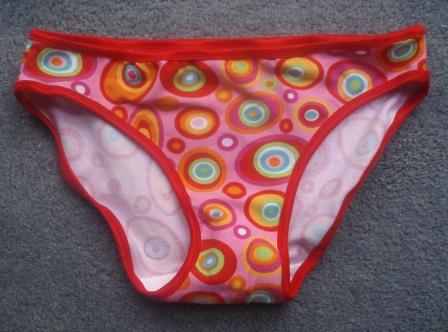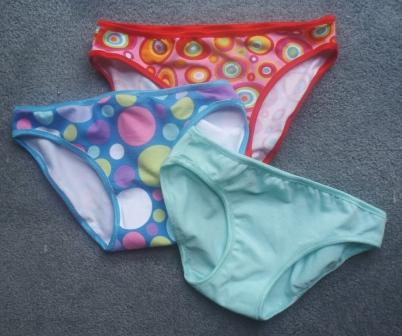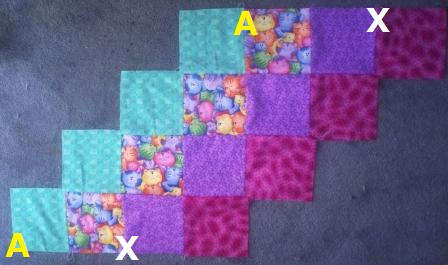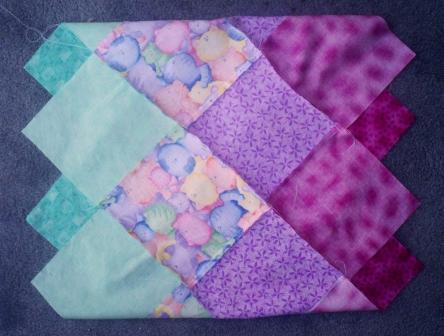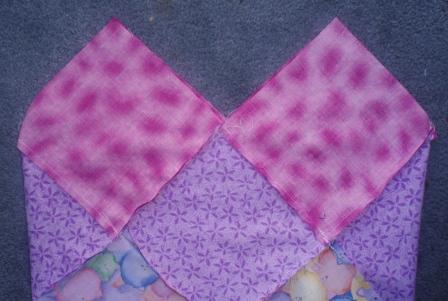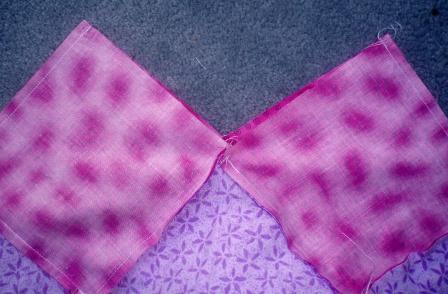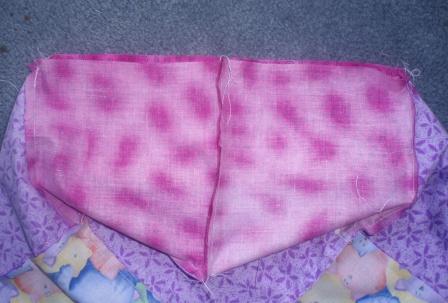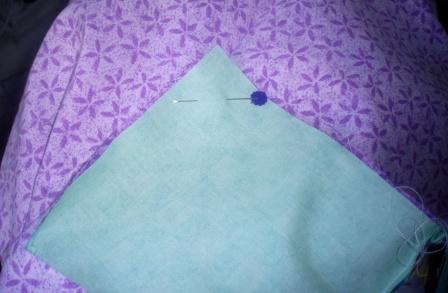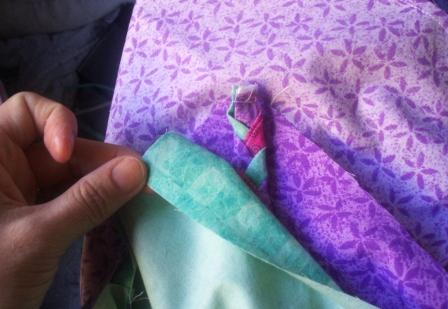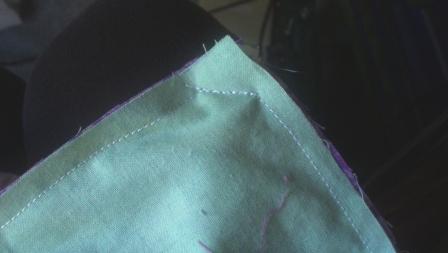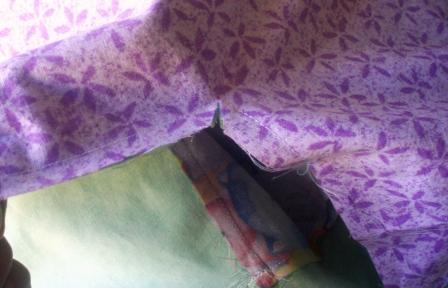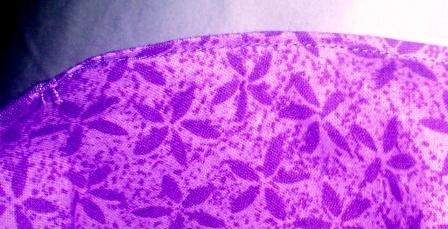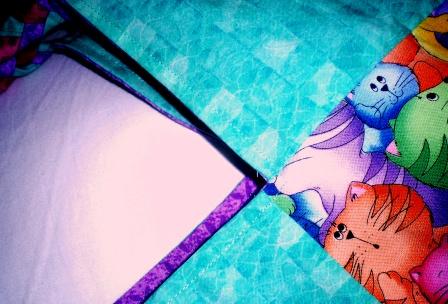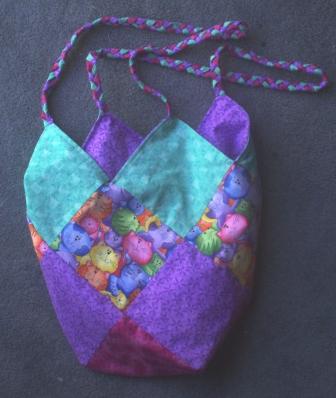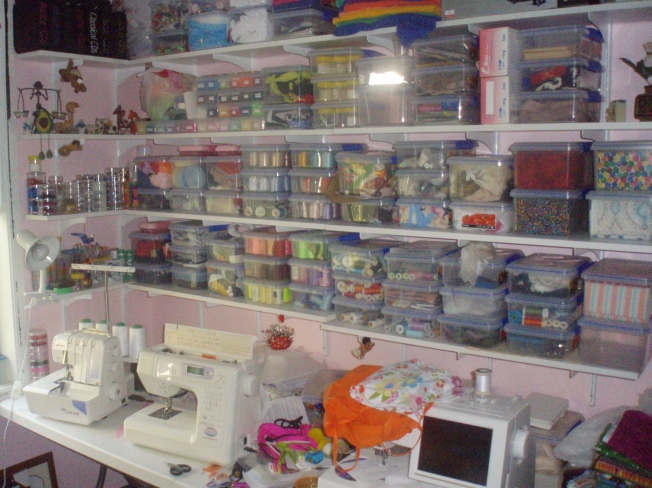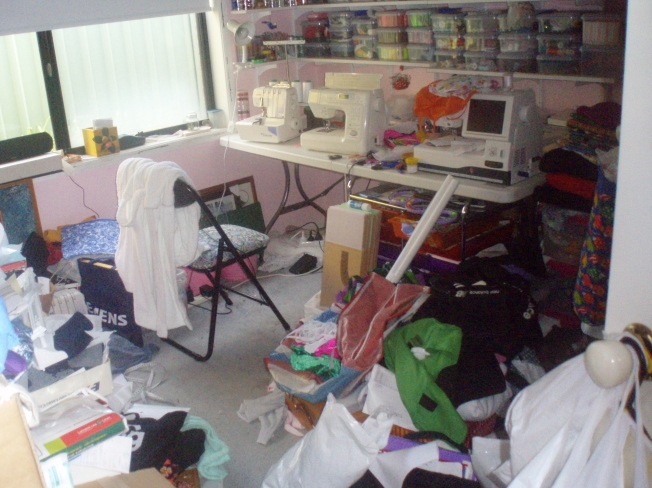I was given a bag like this by a good friend, and I fell in love with it. It is nice and deep, and has a square base rather than being rectangular. I used the bag for many purposes and decided to try and make more. But when I examined it cloesly, to work out how it was constructed, I ended up with my brain in a twist! I have since been taught the ins and outs of how this great looking bag goes together, and it’s much easier than it looks. Now I am a “pro” at whipping one up, and I have begun adding all sorts of variations to the basic design, just to make them unique and interesting.

One of the bags I have made - this one was for my daughter
The bag consists of 16 squares of equal size, which can be cut from all different fabrics, or four co-ordinating fabrics, or even pieced together in quilting-style designs. I usually make plaited fabric handles, as they give a nice finish to the bag. The bag is lined, so this needs to be considered when buying fabric. So far, I have either made bags using fabric I have in my stash, or I have bought fabric and just cut the squares to a size that suits the amount of fabric I have bought. I have used old sheets, or stash fabric as lining. As a result, I cannot really give an idea of how much fabric to buy, though I guess it can be easily worked out once you have chosen a size.
Size-wise, you can determine the end size of a bag using a cutting mat. Pick a square size that you think you might want to use, and mark out one that is 1/2″ smaller (to allow for seams). Measure across it diagonally. A square with sides this length will be the size of the bag’s base. Multiply the measurement by 1.5 to get the bag depth. You can do this in reverse if you want to know what size squares to use to make a specific size bag.
Once you have picked your fabrics and worked out what size squares to use, then you can start cutting. A rotary cutter, quilter’s ruler, and cutting mat will make this job much faster and easier.
As I said before, you will need 16 squares. You will also need strips for the straps – for plaited straps, cut 6 strips, each one being 1.5″ wide and about a yard long (I cut from selvage to selvage). The lining is cut out later.

The squares and strips, cut out and ready to sew
Once you have got your squares and strips, then you can start sewing. I use a 1/4″ (6mm) seam, but you can vary this if desired (keeping in mind that all my measurements have been calculated with a 1/4″ seam in mind). Begin by sewing 4 squares together into a strip, and repeat this until you have 4 strips consisting of 4 squares each (see pictures). When deciding how to arrange your different fabrics, keep in mind the layout shown here. The ends of the strips (which are the pink and the green squares here) will be the top and bottom of the bag, which are still interchangeable at this point. If you are using just four fabrics, then simply sew the squares together in four identical strips as shown here. Keep in mind that the base of the bag will tend to get dirty quickly, so try to put the darkest fabric on the bottom.
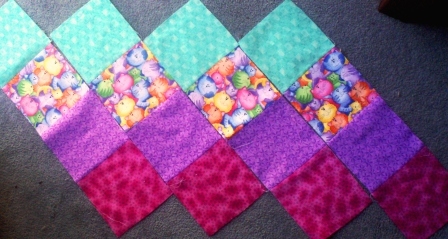
The four strips of squares that make up the bag. They are laid out in the way they will be sewn together to make the bag.
Before sewing the strips together, it helps to press the seams flat. I press them in alternating directions, so they don’t become too bulky when sewn together, and to help the seams butt up against each other as they get stitched.
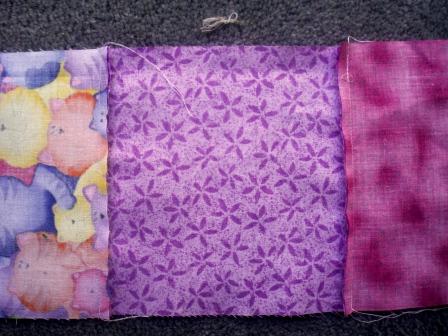
This shows the seams pressed in alternating directions. Each strip's seams get pressed in an identical manner to the others strips.
The four strips then get sewn together in a staggered fashion, as shown, with seams lined up with one another. Don’t worry that the ends of the strips don’t line up with a seam – they are not supposed to. Focus on getting the seams lined up with one another instead. Press once complete.
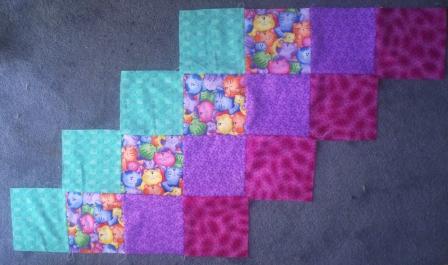
The outside of the bag, formed by sewing the strips to one another in a staqggered fashion.
Now lay the “outer bag” onto your lining fabric with right sides together. Using the outer bag as a template, cut the lining out carefully to match. Before separating the bag and lining, mark one of the TOP squares of the bag with a safety pin (refer to picture above to help work out which your top squares will be – mine are the green ones), and do the same with the corresponding part of the lining. This helps with a better fit when putting the two together. Also, place marks along the straight edges of the lining to correspond to where the seams are on the outer bag.
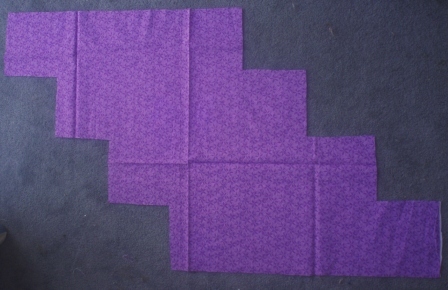
The lining after being cut out. This should be indentical in size to your outer bag. (I probably should have ironed the lining fabric before cutting!)
Now this is where the construction gets complicated to explain, so we will put the lining and bag aside for a moment, and work on the handles….
The strips for the handles need to be folded in half lengthways, with right sides together, and stitched as shown above (it is partly unfolded in the photo, just to show how it gets folded before stitching). The strips all then need to be turned in the right way, ready for plaiting. Secure three strips together at one end, then plait them before securing the other end to create one bag handle. Repeat for the second handle.
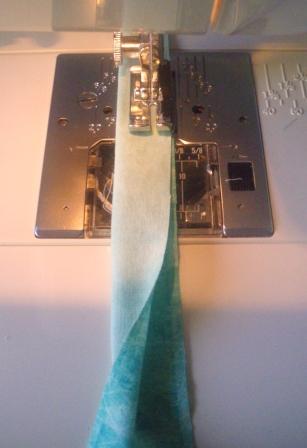
One of the strips for the handle being stitched.
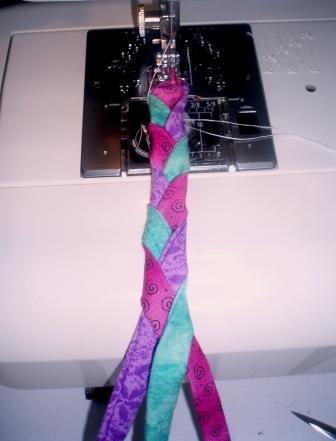
Plaiting the handle. I use the presser foot on my machine to hold the end steady while I plait.
With the handles done, it is time to return to the main part of the bag. This will be explained in Patchwork Bag – Part Two, as this post is already too long 🙂
I hope I have explained things okay so far. Feel free to contact me with any questions.
Happy sewing!
